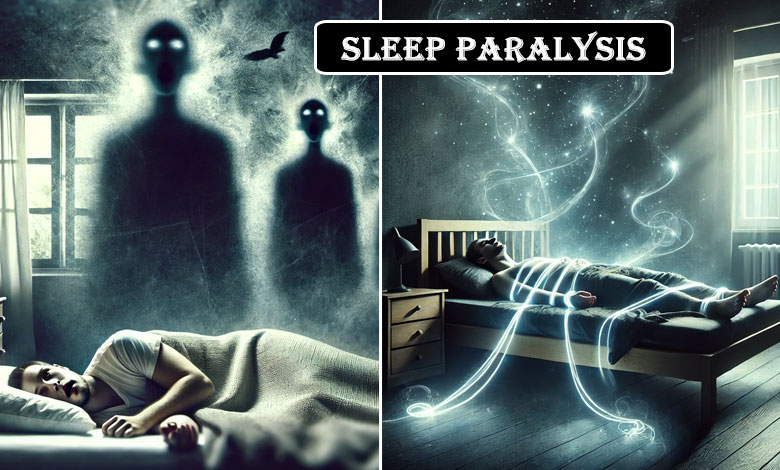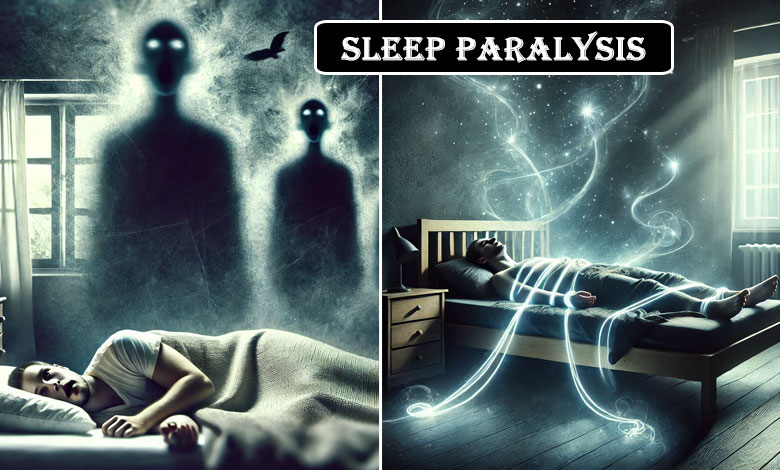
Discover the causes, symptoms, and prevention tips for sleep paralysis, a condition where you’re awake but unable to move. Learn how to manage and reduce episodes effectively.
Hyderabad: Have you ever experienced waking up unable to move, speak, or even open your eyes? This terrifying phenomenon, known as sleep paralysis, affects around 30% of people at least once in their lifetime. While it can be alarming, experts assure that it is usually harmless and preventable with better sleep habits.
Table of Contents
What is Sleep Paralysis?
Sleep paralysis occurs during the transition between sleep and wakefulness when a person becomes temporarily unable to move or speak. It typically lasts a few seconds to a couple of minutes and may involve vivid hallucinations and a sensation of chest pressure or suffocation.
According to the Sleep Foundation, this phenomenon occurs when the brain remains active while the body is still in “sleep mode.” This causes a temporary loss of muscle control, known as atonia, a natural part of the REM sleep cycle, to prevent acting out dreams.
Sleep paralysis is a temporary condition where an individual feels awake but unable to move or speak, typically occurring while transitioning between sleep and wakefulness. This phenomenon, lasting a few seconds to minutes, can evoke fear and confusion due to its vivid hallucinations and sensations of suffocation.
The primary cause of sleep paralysis lies in the natural state of muscle atonia during REM sleep, which prevents physical reactions to dreams. However, when this state persists after waking or sets in prematurely, it results in paralysis. Factors such as sleep deprivation, stress, irregular sleeping patterns, and conditions like narcolepsy or PTSD can increase its likelihood.
Although distressing, sleep paralysis is not dangerous. Preventive measures include maintaining a regular sleep schedule, reducing stress, and avoiding triggers like sleeping on your back. Understanding this condition can alleviate fear and promote better sleep habits for overall well-being.
Common Hallucinations During Sleep Paralysis
Up to 75% of cases involve distressing hallucinations, categorized into three main types:
- Intruder hallucinations: A perception of a dangerous presence in the room.
- Chest pressure hallucinations: Feelings of suffocation, often accompanied by the sensation of an intruder.
- Vestibular-motor (V-M) hallucinations: Sensations of movement, such as flying or out-of-body experiences.
Also Read: Could H5N1 Trigger the Next Global Pandemic? Epidemiologists Fear the Worst
Causes of Sleep Paralysis
While the exact cause remains unclear, several factors are linked to the condition, including:

- Disrupted sleep patterns: Jet lag, shift work, or insomnia.
- Stress and anxiety: High stress levels can disrupt sleep cycles, making sleep paralysis episodes more likely.
- Sleeping position: Lying on your back is often associated with a higher risk.
- Underlying conditions: Disorders like narcolepsy, PTSD, or generalized anxiety disorder.
- Family history: A genetic predisposition may play a role.
Prevention Tips
You can reduce the risk of sleep paralysis by adopting healthier sleep habits:

- Maintain a regular sleep schedule: Aim for 7-9 hours of sleep each night.
- Avoid triggers before bed: Steer clear of caffeine, alcohol, and large meals.
- Sleep on your side: This position may help reduce the likelihood of an episode.
- Practice relaxation techniques: Yoga, meditation, or deep breathing exercises can alleviate stress.
When to Seek Help
The NHS recommends consulting a doctor if sleep paralysis causes severe anxiety or frequent sleep disturbances. A doctor may treat underlying conditions like insomnia or PTSD, and in some cases, medications or Cognitive Behavioral Therapy (CBT) may be prescribed.
Although unsettling, sleep paralysis is a manageable condition. With the right approach, those affected can enjoy restful nights and reduced episodes.

